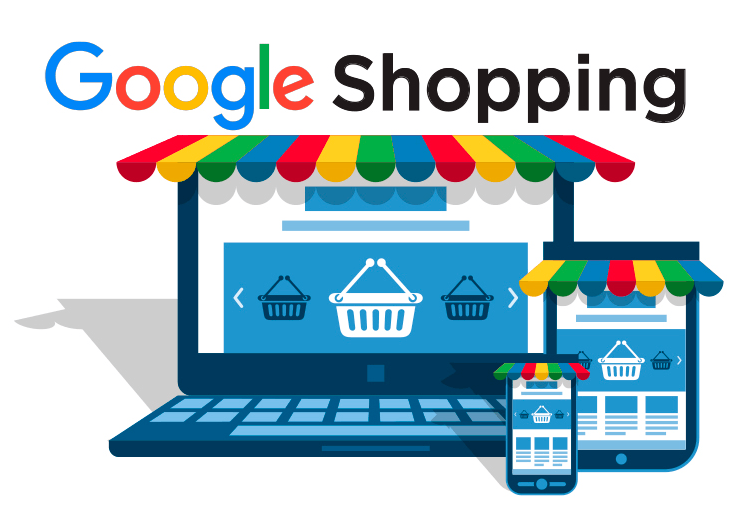Edit Content
E-commerce has become the first choice for many shoppers. Even though they don’t buy products online, the first thing they do is Google it!
81% of consumers go online before heading out to the store.
Above all, it might be a good idea not to limit your store to a website. By uploading products on Google Shopping, you can get new customers while increasing the traffic to your website.
In this blog post, we will answer all the basics around Google Shopping for what you need to get started.
First, we will focus on what exactly Google Shopping is and then explain how to list your products on Google Shopping. Lastly, we will give quick and actionable tips for your online store.
Let’s start.

Google Shopping is a Google service for customers to search, view and compare products.
While customers are searching for products on Google, you and other merchants’ products appear on the results page together. It provides shoppers the same opportunity to browse a variety of products based on the search query. By looking at products, customers are making a comparison. Also, they compare products mainly based on images, price, and reviews. And so, Google shopping is also referred to as Comparison Shopping Engine (CSE) since it allows customers to view products from different merchants on Ecommerce.
Merchants selling on different platforms can easily integrate their stores with Google Shopping. Those platforms are Shopify, WooCommerce, and BigCommerce. Since Google continues to work with existing partners that help merchants manage their products and inventory, it puts merchants in an advantageous place.
If you list your products on certain platforms that are partners with Google such as Shopify, WooCommerce, or BigCommerce, your task is very easy!
You can connect your Google account with that platform plus manage your products on Google directly on that platform. But you need a Google Merchant Center Account whether or not you use those platforms.
In fact, if you don’t use one of those platforms, there are some steps you need to take.
Let’s go one by one.
Set Up a Google Merchant Center Account
First, you need a Google Merchant Center account. It’s simple to set up and easy to navigate; you can create it in just a few steps.
a) Sign in to your Google Merchant account with your Google Account.
b) Add your business information; your business name will appear in your Google listings. After, you enter your country and select the time zone.
c) Make sure your business is following the Merchant Center Guidelines.
Review Your Product Photos, Make Sure Your Product Imagery is Optimized
Google Shopping is a highly visual experience. The first thing shoppers see is the images of your product. Those images may be how shoppers choose which product to click and buy.
After you submit your images, Google does quality checks for images and disapproves if your images have low quality. These quality checks are done frequently and Google doesn’t hesitate to suspend your account.
Tips for high-quality images by Google:
*Use a solid white or light-colored background.
*Use clear, even lightning.
*For non-apparel, images have at least 100 x 100 pixels.
*For apparel, images have at least 250 x 250 pixels.
*The URL must start with either http. Or https and comply with RFC 3986.
*Don’t use an image that doesn’t show your product.
*Don’t use an image that includes promotional code or elements.
Ensure Google understands the data you are submitting. By following the requirements of Google you are good to go. Additionally, you can check out Google’s imagery guidelines here.
Create Your Product Data Feed In The Traditional Way
The product data feed includes information about products in your store. The information you submit using the following requirements of Google will allow you to create successful ads and gather organic traffic to your website.
You can add your products individually, or you can upload them multiple times by creating a spreadsheet. Moreover, remember that there are requirements for Google while uploading products on Google Shopping.
Required attributes of Google:
ID: It’s the product’s unique identifier, the unique value of the product. You should keep the ID the same when updating your data feed.
Title: This is your product’s name. You need to accurately describe your product in short and match the title from the landing page.
Description: This is the product description part. Describe your products’ attributes and features in a maximum of 5000 characters. Don’t include promotional texts while describing your product.
Link: This is the link to your product landing page. Use the verified domain name.
Image Link: This is the URL of your product’s main image. Ensure the URL can be crawled by Google.
Availability: This is where you include the availability information of the product. Include information on in-stock, preorder, or out-of-stock for each product. Keep it up-to-date.
Price: This is where you include the product price. Add the product price information that matches the landing page.
Shipping Costs: Shipping information is where customers can see it in Google Shopping without heading to the landing page. This is required for all products in all countries of sale. You will include shipping costs, shipping speeds, and the location where products will be shipped.
You can check the entire list of required and optional product data so that you will make sure you have what you need.
The use of Google Shopping is on the rise from both merchants and customers. It allows you to list products for free. So, you can spread brand awareness and gain new customers.
If you want to show the presence of your business in Google Shopping, you can take the following steps and use the tips mentioned in the article above to provide more value and traffic to your Ecommerce store. In summary, businesses adopting their online presence in Google can get the advantage of it.













Missing an important marketplace?
Send us your request to add it!